#ayse sultan daughter of ahmed iii
Note
Sorry to bother you in this account, I would have a question about Ümmügülsüm Sultan, the possible daughter of Ahmed I. The relazione of Angelo Alessandri from 1637, Page 649 says: "Ha il Gran Signore di congionti per sangue quatro sorelle ancora, ma fuori di seraglio, essendo tutte maritate in visiri." And since I am not really speaking italian, I am not sure if "per sangue quatro sorelle" means full-sister or just a way to say sister (and so can mean half sister too). One of my followers - who says he speaks italian - says it means full-sister and confirms that beside Ayse, Fatma and Hanzade there was another full-sister of Murad IV.
I mean while I have my doubts, Alderson also lists one Ümmügülsüm (wife of Halil Pasha) based on harem registers, who had the same amount of salary in 1639 as Ayse, Fatma and Hanzade, the daughters of Kösem (and some other women - possible daughters of Murad III had the same amount, while Atike and one Hatice possibly daughters of Ahmed I had less salary). Also, there is the known other register that you also mentioned on ottomanladies page, based on Tezcan: “A privy purse register from 1622 gives the names of five unmarried princesses, who may be daughters of Ahmed, Osman II, and even Mehmed III: Umm-i Külsum, Hanzade, Halime, Fatma, and Akile.”
The fact that there was one Ümmügülsüm in 1622 who was still unmarried, and then in 1639 she had the same amount of stipend as Ayse, Fatma, Hanzade and the relazione mentioning that 4 (full)sister thing, maybe suggests that Kösem and Ahmed MAY had another daughter together, Ümmügülsüm? What do you think?
Hello! I guess my askbox on ottomanladies is still closed.
So, your follower is right; what Angelo Alessandri says in his relazione is that Murad IV has four full-blooded sisters who all live outside the palace because they are married. When I read this part, I simply assumed that the fourth princess was Gevherhan but we don’t have any information about her after Recep Pasha’s death in 1632. Then, I assumed he was wrong because it wouldn’t be the first time a European ambassador mistook half-siblings for full-blooded siblings.
About Ümmügülsüm, I have always assumed he was a daughter of Mehmed III’s or Murad III’s. I have never paid attention to her, as I’m sure you know from my posts on ottomanladies.
But you made me curious so I spent some time looking into this.
First, I think you meant Dumas when you mentioned that list based on harem registers because I have found it in Les Perles de Nacre du Sultanate. Alderson doesn’t list an Ümmügülsüm Sultan among Ahmed I’s daughters (unless I somehow missed it).

Secondly, I think there is a problem with this source: on page 62, the register is from February 1649 to February 1650. In Annex A, though, (page 461), she says that the same register is dated February 1639. So what is the truth? February 1639, because the register keeps saying “Şevval 1048”, and that’s February-March 1639 (you can google it). The mistake on page 62 is… weird, though.
Moreover, the list above is somewhat different from the transliteration she put in Annexe A. For example, on page 463 she says that the register says “Hümaşah Sultan merhum Nakkaş Hasan Pasha”, but on the list she put on page 62, the same Hümaşah Sultan is married to one Hüseyin Pasha. I don’t understand why she changed the source without addressing it— or is it just a typing mistake? I hope it is because I think Hümaşah Sultan was truly married to Nakkaş Hasan Pasha: Nakkaş Hasan Pasha was identified as married to one of Ahmed I’s aunts by the Baron de Selignac, and a letter dated 6 October 1642 by a Ragusian diplomat lists among Ibrahim’s aunts one “Humascie sultana moglie di Hasan Pascia [Hümaşah sultan wife of Hasan Pasha]”. In another letter, this one dated 7 July 1648, Hümaşah is identified as “moglie di Nachasc Hasanpascia Humasce sultan vedova [Hümaşah sultan, widow of Nakkaş Hasan Pasha]”.
If Dumas voluntarily changed Hasan Pasha into Hüseyin Pasha then I don’t know why she did it because contemporary evidence suggests that this princess called Hümaşah was Ahmed I’s aunt and therefore Ibrahim’s great-aunt (I won’t fault the Ragusian diplomat for not stating the difference because it wasn’t done often at the time), and was married to Nakkaş Hasan Pasha, who is called “merhum” in the harem register because he was deceased at the time.
Similarly, on page 462, it is listed one “Kameri Sultan merhum Sofi Bayram Pasha”, but on the list on page 62, she is called Fahri. Again, what prompted Dumas to change the wife’s name? Is it because Öztuna says that Fahri/Fahriye Sultan (daughter of Murad III) was married to Sofu Bayram Pasha? Then again, why was she called Kameri in the register? Is it a mistake from the clerk or did she have multiple names? Or did Dumas transliterate her name wrong? Or did she change the princess’ name into Fahri because that’s what Öztuna says? Interestingly, in the family trees in Annex B, she’s called Fahri again. The same Ragusian diplomat above also lists the wife of Bayram Pasha: “Vanni sultana moglie di Soffi Bariam Pascia”; unfortunately I cannot say what Vanni should be because it doesn’t sound like Kameri at all. It could sound like Fahri but… it’s a stretch.
Beyhan Sultan, Safiye Sultan, and Mihrimah Sultan are widows too but it’s difficult to identify them because their husbands are one “Mustafa Pasha”, one “Mehmed Pasha”, and a “Mehmed Pasha from Kefe”. I tried to google this Mehmed Pasha from Kefe and everyone says he was married to Mihrimah Sultan, daughter of Murad III. The problem is the sources of this claim (on those websites) do not say this. The Ragusian letter talks about a Beyhan Sultan married to a “Mustai Pascia” which could be Mustafa Pasha, but this is all I have to say.
I also would like to highlight that the princesses listed in the Ragusian letter are those who received gifts from the Ragusian diplomat so there could have been more, especially aunts.
As for “Atike Sultan Kenan Pasha” (who receives 9,900 aspers per month): she seems to be Ahmed I’s daughter Atike (also confirmed by the Ragusian letter, who lists her among Ibrahim's sister).
Now, about “Ümmügülsüm Sultan Halil Pasha” (who receives 12,900 aspers per month): I still personally maintain that she was an aunt and not a sister. I could not identify her, nor her husband Halil Pasha, but we have to keep in mind that we don’t have all the names of Mehmed III’s daughters. In the Ragusian letter dated 1648, there’s one “moglie di Hersechli Ahmet Pascia Iumi sultan [wife of Hersekli (? it could mean that he comes from Herzegovina) Ahmed Pasha, Iumi Sultan” (Iumi kind of sounds like Ümmi). It’s basically ten years later Dumas' list so she could have changed husband in the meantime but unfortunately, I couldn’t identify “Hersechli Ahmet Pascia”— if someone else has information about him, please do not hesitate to share (with sources, please).
I’m sorry this was so long and unhelpful, I was carried away :(((
EDIT: I have found the Ragusian letters in V. Miović - Per favore della Soltana: Powerful Ottoman Women and Ragusan Diplomats
30 notes
·
View notes
Text
Lets talk about Ümmügülsüm Sultan
There is a chance, that Kösem and Ahmed had another daughter together: Ümmügülsüm.
I am so glad, that with Anonymous sender and Ottomanladies, the truth came to light. Ottomanladies answered very long and very detailed about Ümmügülsüm, she shared her thoughts about the topic, now, here, you can find a conclusion from me:
What we know:
A privy purse register from 1622 gives the names of five unmarried princesses, who may be daughters of Ahmed, Osman II, and even Mehmed III: Umm-i Külsum(=Ümmügülsüm), Hanzade, Halime, Fatma, and Akile. Hanzade and Fatma were Kösem's daughters; Akile is possibly mistaken for Atike or Abide; Halime might be Mehmed III's daughter, named after her mother, Halime. But Ümmügülsüm was less clear.
The relazione of Angelo Alessandri from 1637 says that Murad IV had four FULL-sisters. We know three of them: Ayse, Fatma, and Hanzade. But who could be the fourth? Gevherhan was already dead, Atike was well-knownly not a full-sister and also not Abide. Maybe Ümmügülsüm?
There are some decisions and letters of Murad IV, where he mentions Ümmügülsüm as a sister of his. He uses the same wording that he used for Ayse, who undoubtedly was his full-sister, suggesting Ümmügülsüm was also a full-sister of his.
The 1638/39 harem registers mention one Ümmügülsüm Sultan who received the highest payments besides the three already known daughters of Kösem (Ayse, Fatma, Hanzade) and two daughters of Murad III. This means she could be either the daughter of Murad III or Ahmed I. But since Ahmed I's other daughter, Atike - who was not Kösem's - got a lesser stipend, if Ümmügülsüm is Ahmed I's daughter, she had to be Kösem's daughter too and so she is the fourth full-sister of Sultan Murad IV.
In 1648 the Raguzan envoy also mentions her (possibly her as they use the name Iumi), as the wife of Ahmed Pasha, governor of Herzegovina. They probably married ~1642 until the pasha's death in 1648. This was her second marriage, her first husband was one Halil Pasha, with whom she married before 1638.
In book ''Whisper of the cities'' one Ümmühan Sultan is mentioned as she met with the English ambassador's wife. Based on her, Ümmühan was said to be the aunt of deposed Mehmed IV and sister of Ibrahim I. This happened in 1690, so she still was alive then.
There are still questions:
Why no historian ever discovered this information as none of the evidence is new?
Why Ümmi is not mentioned among Ahmed I's children?
Where is she buried? *
When was she born? *
Why Ibrahim did not force her to serve Telli Hümasah (his wife) when he did it to all of the other daughters of Kösem?
To be honest the burial place of Ahmed I is quite a mess. For example there are two sarcofagies for 'Zeynep' daughters of Ahmed I. One of the sarcofagies stands for an adult woman. There was no daughter of Ahmed, called Zeynep who reached adulthood. So maybe the name is mistaken and that Ümmügülsüm. Maybe she was buried somewhere else as she lived a quite long life, survivin everyone around her and her grave is not idetified yet.
Considering the known children of Kösem and their birth date, the most possible for Ümmügülsüm is that she was born during the late reign of Ahmed I. In 1605 Kösem gave birth to Mehmed; in 1606 or 1607 to Ayse; then in 1607 or 1608 to Fatma; in 1609 to Hanzade. While I see that there is a gap here for one more child (if Kösem got pregnant extremely rapidly), she cannot be older than Fatma, as she was also not married off in 1622 yet, and also since we know quite precisely the sequence of these daughters, I do not think another one was born here but no one knows about her. It would be strange. Then in 1612, she gave birth to Murad, but between him and Hanzade there was time for another child - let it be Selim who was born in 1611 or Ümmügülsüm. Then Kasim followed Murad quite quickly, he was born in 1614, and then Ibrahim came in 1615, so there was no time for anyone else between Murad and Ibrahim. After 1615 there is another chance for the birth of Ümmügülsüm. So she either was born after Hanzade (~1611), or after Ibrahim (~1616). Either way - considering she was not just still alive in 1690, but was surely not suffering, dying since she was involved in the diplomacy meeting - she possibly died in the 1690s, she very probably reached 80 maybe even more in the end.
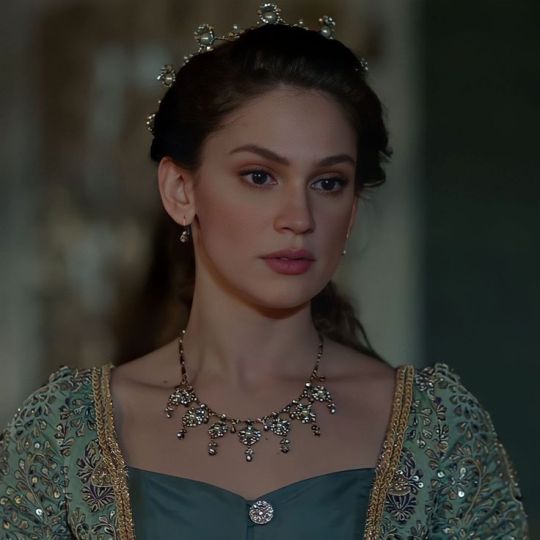
#ottoman history#ottoman empire#valide kösem sultan#mahpeyker kösem sultan#kösem#ahmed i#ümmügülsüm#ümmügülsüm sultan#ümmi#ummuhan#ummugulsum#ümmihan#ummukulsum#ümmükülsüm
16 notes
·
View notes
Text
reallifesultanas Thank you very much for your answer! Yes I meant Dumas not Alderson sorry for that! Is there a reason for the illogical amount of salaries? I mean the earlier salary lists of registers clearly help us to indentify the sultanas. The 1555-1556 registers are 100% logical; the 1603-1604 registers are still logical: Safiye, Handan, aunts of Ahmed, great-aunt of Ahmed, great-great aunt's daughter (Ayse Hümasah), cousin of Mehmed III, far relatives. But then there is this one.. highest salary for the full sisters of the sultan is logical, but then what does the daughters of Murad III doing there? Fahri/Kamer and Hümaşah/Rukiye* are surely Murads and so Ümmügülsüm could be also Murad's... For the lesser salaries Beyhan, Safiye, Hatice I could imagine they were Mehmed III's, maybe Beyhan's Mustafa was Mirahur Mustafa? But these stipends are just not logical... (*Murad III's daughte Rukiye was said to be married to Nakkas Hasan not Huma). And for Ümmügülsüm there is that one report from 1688 (Katherine Trumbull) when it is said she developed a relationship with Sultana Ümmühan, the aunt of the deposed Sultan Mehmed IV, through visits to the harem. This Ümmühan could be Halil Pasha's wife and so Murad III's/Mehmed III's daugher, or is it more likely not an aunt but sister/cousin? Or she truly can be Ahmed I's daughter? There is this 85 numaralı Mühimme defteri that provide some informations suggesting suggesting Ümmügülsüm was sister of Murad IV. Sadly I dont have the book so I cannot check how true is this claim...
I hope you don't mind if we continue here on ottomanladies.
I know the harem register doesn’t seem to make sense from the point of view of hierarchy but we must remember that the hierarchy could be broken on the basis of favouritism. Maybe those aunts were more favoured than the others.

In this table we can see Gevherhan Sultan, a great-aunt of Ahmed I’s, the reigning sultan. Dumas mistakenly identifies her as a daughter of Murad III’s and a concubine of non-haseki rank, but the reality is she’s first because she’s the most senior princess alive. If you look closely at the second category — “Frais de bouche” — she receives the same amount as Ayse and Fatma, Safiye’s daughters. Gevherhan was quite favoured by Ahmed I because she had trained Handan in her household. Also, her late husband Cerrah Mehmed Pasha had performed Ahmed I’s circumcision. Borekçi says that she was the only recipient — apart from Handan and Safiye — of sable fur:
“A register preserved in the Topkapı Palace Archives gives further details of the gifts Gevherhan Sultan received from her great grand-cousin. At the beginning of this register, there are records of the furs and robes of honor sent by the new sultan to his larger family right after his enthronement on December 27, 1603. Here, Gevherhan Sultan is listed as a recipient of a sable robe (semmûr kaplu nimtâne) and recorded as the third female member of the dynasty after the retiring queen mother, Safiye Sultan, and the new queen mother, Handan Sultan, and before all other living sisters and daughters of Murad III and Mehmed III -- a clear indication of her privileged position. Later, on February 6, 1604, she again appears in the register, this time as the only female family member apart from Handan Sultan to receive a fur-trimmed silk robe.”
(I believe the 6 şehzâdegân are unmarried princesses that Ahmed still had to matchmake but this is another story)
I know it’s Rukiye that Öztuna says has married Nakkaş Hasan Pasha but he could be wrong tbh, it wouldn’t be the first time. Also, neither Sakaoğlu or Uluçay confirm this; they give no information about Rukiye except for the identity of her mother. Unfortunately Öztuna never gives his sources so we don’t know where he found that Rukiye was married to Nakkaş Hasan Pasha. I would trust the harem register and contemporary sources (the ragusian diplomat, in this case) more tbh… both say that Nakkaş Hasan Pasha was married to a princess called Hümaşah…
About Beyhan… the problem is the wife of Mirahur Mustafa Pasha went on to marry Cigalazade Sinan Pasha’s son Mahmud Bey in 1612, and died before 1620, the date of Mahmud Bey’s second wedding, which means she shouldn’t have been alive in 1638-39. The Ragusian letter date 1648, though, lists a Beyhan Sultan widow of “Nideli Mustafa Pasha”— unfortunately, I can’t say who this man is or what “nideli” means.
I do agree with you, though. I think that Beyhan, Safiye, and Hatice are daughters of Mehmed III. We know that seven princesses were married in the summer of 1613, after all. A letter dated July 1613 by a Ragusian diplomat, furthermore, says that “at the present there are fifteen sultanas”.
About Katherine Trumbull, I guess you mean this:
“While in Istanbul, Katherine had developed a relationship with Sultana Ümmühan, Mehmed IV’s aunt and sister to Ibrahim II. On 14 July 1688, Katherine met with Ümmühan for the first time, and the two women continued to meet in the imperial harem throughout Trumbull’s residence in Istanbul. During these visits, Katherine must have been accompanied by someone with knowledge of spoken Turkish, or else it is unclear how she would have been able to communicate with the women she met in the harem. At any rate, when she returned to the embassy, she brought to Trumbull news of things taking place in the Ottoman court.” — Ghobrial, John-Paul A, 'Overcoming Distance in Everyday Communication', The Whispers of Cities: Information Flows in Istanbul, London, and Paris in the Age of William Trumbull (Oxford, 2013; online edn, Oxford Academic, 23 Jan. 2014)
Unfortunately, William Trumbull’s diaries were not published, they’re in the British Library. I always like to cross-check my sources and the fact that I can’t read the original kind of annoys me. Ümmühan is quite an unusual name for an Ottoman princess: Ümmi means mother and Han sovereign, it kind of sounds like “valide sultan”, which is why I thought it was a title for a moment but I couldn’t find anything to confirm this. It is kind of interesting, though, that Öztuna says that Ibrahim’s eldest daughter was called Ümmügülsüm, who could have been named after another Ümmügülsüm (the one that in 1622 was unmarried? Who knows)
The Mühimme defteri is not a book but a collection of copies of all the imperial decrees or decisions taken in the imperial council. They’re numbered and the number 85 refers to the years 1630-31. You can find the PDF for free on the website of the Turkish National Archives but, well, it’s in Ottoman Turkish.

(This is one of them)
So I can’t really read it even though I have it.
#ask: ottoman history#reallifesultanas#gevherhan sultan daughter of selim ii#rukiye sultan daughter of murad iii#humasah sultan daughter of murad iii#unnamed daughters of mehmed iii#i'm sorry if the layout looks weird but it's been so long since i used tumblr and i'm a little rusty
11 notes
·
View notes
Text
Sultanate of Women (3/7)
Nurbanu Sultan (c.1525/ 7 December 1583)

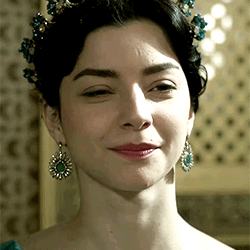
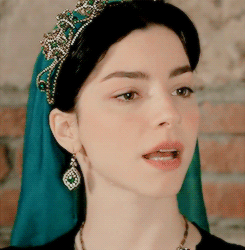
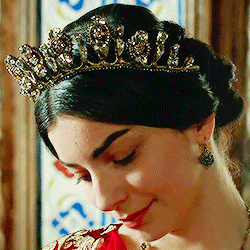
Daughter of Nicolo Venier and Violanta Baffo
Haseki Sultan (Legal Wife) of Sultan Selim II and Valide Sultan of Sultan Murad III
Mother of Sultan Murad III, Sah Sultan, Ismihan Sultan, Gevherhan Sultan, and Fatma Sultan
Grandmother of Sultan Mehmed III, Sehzade Mahmud, Sehzade Mustafa, Sehzade Oman, Sehzade Bayezid, Sehzade Selim, Sehzade Cihangir, Sehzade Abdullah, Sehzade Ahmed, Sehzade Yakub, Sehzade Alemsah, Sehzade Yusuf, Sehzade Hüseyin, Sehzade Korkud, Sehzade Ali, Sehzade Ishak, Sehzade Alaeddin, Sehzade Davud, Sehzade Suleiman, Sehzade Yahya, Hümasah Sultan, Ayse Sultan, Fatma Sultan, Mihrimah Sultan, Rukiye Sultan, Mihriban Sultan, and Fahriye Sultan.
Mother-in-law of Çakırcıbaşı Hasan Pasha, Zal Mahmud Pasha, Sokullu Mehmed Pasha, Kalaylıkoz Ali Pasha, Safiye Sultan, Piyale Pasha, Cerrah Mehmed Pasha, and Kanijeli Siyavuş Pasha
Fun Fact For Newbies: Nurbanu Sultan was born Cecilia Venier-Baffo
47 notes
·
View notes
Photo






The granddaughters of Sultan Ahmed III of the Ottoman empire who reached adulthood -- requested by anon
#history#historyedit#ottoman history#ahmed iii#saliha sultan daughter of ahmed iii#ayse sultan daughter of ahmed iii#esma sultan daughter of ahmed iii#sah sultan daughter of mustafa iii#beyhan sultan daughter of mustafa iii#hatice sultan daughter of mustafa iii#ayse durrusehvar hanim daughter of abdulhamid i#esma sultan daughter of abdulhamid i#hibetullah sultan daughter of abdulhamid i#ottomanladiesedit
118 notes
·
View notes
Photo









𝐢𝐧 𝐭𝐡𝐞 𝐦𝐨𝐧𝐭𝐡 𝐨𝐟 𝐨𝐜𝐭𝐨𝐛𝐞𝐫 𝐢𝐧 𝐨𝐭𝐭𝐨𝐦𝐚𝐧 𝐡𝐢𝐬𝐭𝐨𝐫𝐲
#history#historyedit#ottoman history#*everymonth#ahmed iii#tirimujgan kadin#ulviye sultan daughter of abdulhamid ii#sehzade mustafa son of suleyman i#haseki rabia sultan#emine nazikeda kadin#ayse sultan daughter of ahmed iii#safiye sultan daughter of mustafa ii#mihrisah sultan#sehzade omer son of osman ii#sehzade hatun daughter of murad ii#gevherhan sultan daughter of ibrahim i#meyliservet kadin#mehmed iv#selcuk hatun daughter of mehmed i#sehzade murad son of suleyman i#sehzade mahmud son of suleyman i#durriaden kadin#osman iii
170 notes
·
View notes
Photo










Ottoman Princesses named: Ayşe
Ayşe is the Turkish equivalent of the Arabic name A'isha, famous for being the name of the youngest wife of Prophet Muhammad. It is one of the most common names among Ottoman princesses and consorts.
#history#historyedit#ottoman history#ayse hatun daughter of mehmed i#ayse sultan daughter of bayezid ii#ayse humasah hanimsultan#ayse sultan daughter of murad iii#ayse sultan daughter of mehmed iii#ayse sultan daughter of ahmed i#ayse sultan daughter of ibrahim i#ayse sultan daughter of mustafa ii#ayse sultan daughter of ahmed iii#ayse durrusehvar hanim daughter of abdulhamid i#ayse sultan daughter of abdulhamid ii#durrusehvar sultan daughter of abdulmecid ii#ottomanladiesedit#princessesnames
1K notes
·
View notes
Photo








On this day in Ottoman history - 9 July - Ayşe Sultan the younger died:
Ayşe Sultan was the elder daughter of Ahmed III and Musallî Kadın, her younger sister being Zübeyde Sultan, and she was born on 10 October 1715. She was usually called Ayşe Sultan "the younger" to distinguish her from Mustafa II's daughter Ayşe Sultan "the elder".
In 1728 she was married to Silâhdâr Istanbullu Kunduraçı-zâde Mehmed Paşa (later Grand Vizier), though the marriage was consummated only in 1733. After his death, she married Ahmed Râtib Paşa, son of Topal Osman Paşa, with whom she had one child: Rukıyye Hanım-Sultân (1744-1780).
Having survived her second husband as well, her brother Mustafa III married her to Silahdâr Mehmed Paşa. The couple never lived together, probably because of the princess’ dislike for her new husband.
Ayşe Sultan died on 9 July 1775 and was buried in the New Mosque, where her daughter Rukıyye rests beside her. Although she reportedly had pious foundations in Ankara and İzmit, it is not known what they were about.
sources: Yılmaz Öztuna - Devletler ve Hanedanlar, Necdet Sakaoğlu - Bu Mülkün Kadın Sultanları, M. Çağatay Uluçay - Padişahların Kadınları ve Kızları
#history#historyedit#ottoman history#ayse sultan daughter of ahmed iii#on this day in ottoman history#ottomanladiesedit
92 notes
·
View notes
Photo










Ahmed III of the Ottoman Empire + daughters who reached adulthood
#history#historyedit#ottoman history#ahmed iii#fatma sultan daughter of ahmed iii#ummugulsum sultan daughter of ahmed iii#atike sultan daughter of ahmed iii#zeynep sultan daughter of ahmed iii#saliha sultan daughter of ahmed iii#ayse sultan daughter of ahmed iii#hatice sultan daughter of ahmed iii#nefize sultan daughter of ahmed iii#esma sultan daughter of ahmed iii#zubeyde sultan daughter of ahmed iii#ottomanladiesedit#daughtersof
350 notes
·
View notes
Note
Sakaoğlu, actually writes two death dates for Ayşe Sultan (daughter of Ahmed III) on her Introduction, her death date was 9 July 1775, but at the end of her life, it was written she died on 3 October 1776. You can search it on Google Books, writing 9 Temmuz and 3 Ekim. Well which one is right?
I don't need to use Google books, I own the book.
At the end of the entry of Ayşe Sultan, Sakaoğlu quoted a passage from Mecmuâ-i tevârih by Hafız Hüseyin Ayvansarayî; this is where it is said that she died on 3 October 1776. I think it was just an addition from his part but he stands by 9 July 1775.
7 notes
·
View notes
Text
On this day, 9 July, in Ottoman history
9 July 1775 - death of Ayşe Sultan "the Younger": daughter of Ahmed III and Musli Kadın, she was also Zübeyde Sultan's elder sister. She was called the younger to distinguish her from Mustafa II’s daughter Ayşe Sultan, called “the elder”. She married İstanbullu Mehmed Paşa in 1728, but her husband died in 1738. In 1740 she married Grand Vizier Topal Osman Paşa’s son Gül Ratıb Ahmed Paşa, who died in 1748. In 1758, her brother Mustafa III married her to Silâhdar Cihangiri Mehmed Paşa. Ayşe Sultan died in 1775 and was buried in the New Mosque, her daughter Rukiye Hanımsultan lying beside her.
#history#ottoman history#on this day in history#on this day in ottoman history#ayse sultan daughter of ahmed iii#musli kadin#ahmed iii
15 notes
·
View notes
Photo



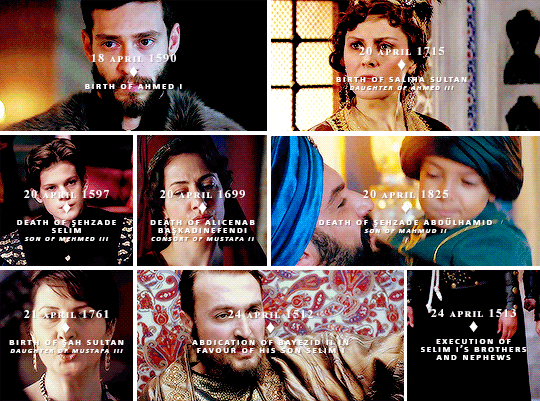
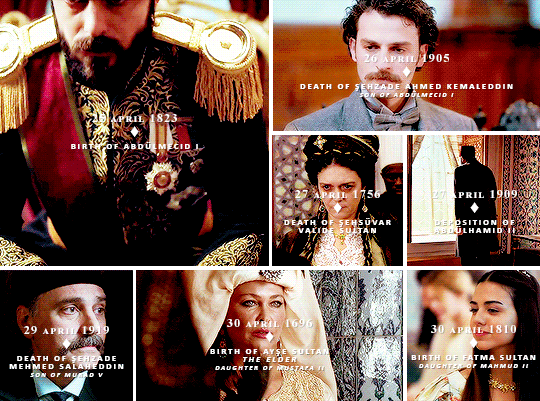
𝐈𝐧 𝐭𝐡𝐞 𝐦𝐨𝐧𝐭𝐡 𝐨𝐟 𝐀𝐩𝐫𝐢𝐥 𝐢𝐧 𝐎𝐭𝐭𝐨𝐦𝐚𝐧 𝐡𝐢𝐬𝐭𝐨𝐫𝐲
#history#historyedit#ottoman history#ayse sultan daughter of murad iii#haseki hurrem sultan#nazikeda kadin#emetullah sultan daughter of mustafa ii#saliha sultan daughter of ahmed iii#alicenab kadin#sah sultan daughter of mustafa iii#sehsuvar sultan#ayse sultan daughter of mustafa ii#fatma sultan daughter of mahmud ii#ottomanladiesedit#*everymonth#abdulhamid i#abdulhamid ii#murad iv#selim i#abdulmecid i
164 notes
·
View notes
Photo





Ibrahim Han of the Ottoman Empire + the women in his life
#history#historyedit#ottoman history#kosem sultan#turhan hatice sultan#haseki hatice muazzez sultan#saliha dilasub sultan#haseki ayse sultan iii#haseki mahienver sultan#haseki sacbagli sultan#haseki sivekar sultan#haseki humasah sultan#sekerpare hatun#ayse sultan daughter of ahmed i#fatma sultan daughter of ahmed i#hanzade sultan daughter of ahmed i#kaya ismihan sultan daughter of murad iv#ottomanladiesedit#*womeninlife
388 notes
·
View notes
Photo


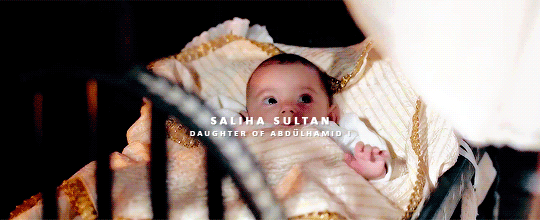


Ottoman Princesses named: Saliha
Saliha is a name of Arabic which means virtuous, pious or devoted to God.
#history#historyedit#ottoman history#ayse humasah hanimsultan#saliha sultan daughter of ahmed iii#saliha sultan daughter of abdulhamid i#saliha sultan daughter of mahmud ii#saliha sultan daughter of abdulaziz#ottomanladiesedit#princessesnames
169 notes
·
View notes
Photo

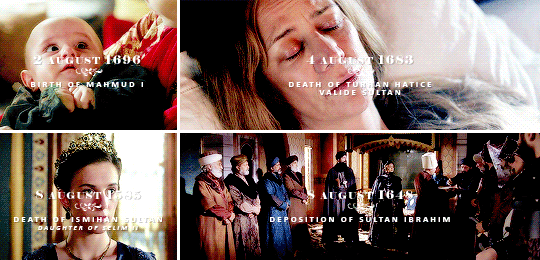


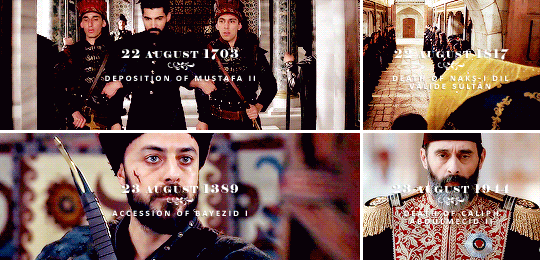




𝐢𝐧 𝐭𝐡𝐞 𝐦𝐨𝐧𝐭𝐡 𝐨𝐟 𝐚𝐮𝐠𝐮𝐬𝐭 𝐢𝐧 𝐨𝐭𝐭𝐨𝐦𝐚𝐧 𝐡𝐢𝐬𝐭𝐨𝐫𝐲 | insp by @winterhalters
#history#historyedit#ottoman history#ottomanladiesedit#*everymonth#turhan hatice sultan#ismihan sultan daughter of selim ii#ibrahim I#ayse sultan daughter of abdulhamid ii#esma sultan daughter of ahmed iii#cemile sultan daughter of abdulmecid i#mustafa ii#naksidil sultan#bayezid i#abdulmecid ii#emine sultan daughter of abdulaziz#aliye sultan daughter of murad v#behice sultan daughter of abdulmecid i#fatma sultan daughter of abdulmecid i#rukiye sabiha sultan daughter of mehmed vi#selim i#murad v
139 notes
·
View notes
Photo








𝐢𝐧 𝐭𝐡𝐞 𝐦𝐨𝐧𝐭𝐡 𝐨𝐟 𝐣𝐮𝐧𝐞 𝐢𝐧 𝐨𝐭𝐭𝐨𝐦𝐚𝐧 𝐡𝐢𝐬𝐭𝐨𝐫𝐲
#history#historyedit#ottoman history#esma sultan daughter of abdulhamid i#mustafa ii#bayezid ii#ahmed iii#sultan abdulaziz#abdulmecid i#pargali ibrahim pasha#serfiraz hanim#insirah hanim#ayse gulbahar hatun#murad ii#late ottoman empire#ottomanladiesedit#*everymonth
166 notes
·
View notes